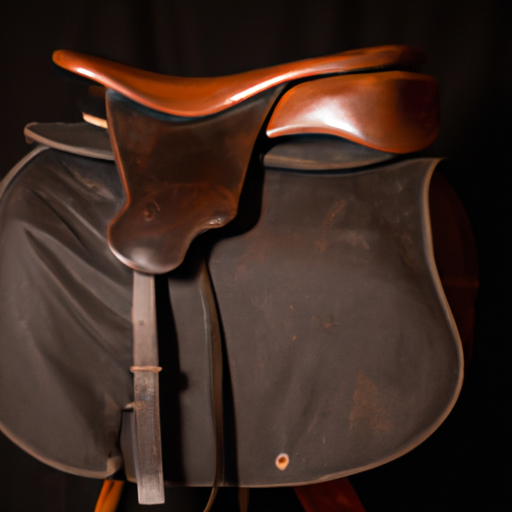Essential Tips for Maintaining Your Saddle
Maintaining and caring for your saddle is essential for ensuring its longevity and optimal performance. Regular maintenance not only keeps your saddle looking good but also prevents any potential damage that could occur over time. Here are some essential tips for maintaining your saddle:
Clean your saddle regularly
One of the most important aspects of maintaining your saddle is cleaning it regularly. Use a damp cloth or sponge to remove any dirt, sweat, or grime that may have accumulated on the surface. Make sure to clean both the top and underneath parts of the saddle. Avoid using harsh chemicals or solvents as they can damage the leather.
Condition the leather
Leather saddles require regular conditioning to keep them supple and prevent drying out or cracking. Use a high-quality leather conditioner or oil specifically made for saddles. Apply it evenly on the surface and let it soak in for a few minutes. Gently wipe off any excess conditioner to avoid a slippery surface.
Store your saddle properly
When not in use, make sure to store your saddle in a cool, dry place away from direct sunlight or extreme temperature changes. Avoid storing it on a hard surface that may cause pressure points or deform the shape of the saddle. Consider using a saddle cover or bag to protect it from dust and scratches.
Check and tighten hardware
Regularly check the hardware on your saddle, including the billet straps, stirrup bars, and girth buckles. Ensure that everything is securely fastened and that there are no loose or damaged parts. If any hardware is worn or damaged, it’s important to replace it promptly.
Get your saddle professionally inspected
Even with regular maintenance, it’s a good idea to have your saddle professionally inspected at least once a year. An expert can assess the overall condition of your saddle, identify any potential issues, and provide necessary repairs or adjustments.
By following these essential tips for maintaining your saddle, you can ensure its longevity and optimal performance. Regular cleaning, conditioning, proper storage, hardware checks, and professional inspections are all crucial in keeping your saddle in top shape for years to come.
The Importance of Proper Care for Your Saddle
Maintaining and caring for your saddle is essential to ensure its longevity and optimal performance. A well-maintained saddle not only enhances your riding experience, but also helps in preventing discomfort and potential injuries for both you and your horse. In this article, we will explore the importance of proper care for your saddle and provide useful tips on how to keep it in top condition.
Regular cleaning is the first and most crucial step in saddle care. After each ride, make it a habit to remove any dirt, sweat, and debris from your saddle. Use a soft brush or a damp cloth to gently wipe away any grime, paying special attention to areas that come into direct contact with your horse. Avoid using harsh chemicals or abrasive materials that can damage the leather.
Once your saddle is clean, it’s important to keep the leather moisturized and supple. Leather conditioners and oils are excellent for maintaining the quality of the leather and preventing it from cracking or drying out. Apply a small amount of conditioner or oil to a clean cloth and rub it into the saddle, paying extra attention to areas that may be prone to stiffness or wear, such as the stirrup leathers and billets.
In addition to regular cleaning and conditioning, proper storage is also crucial for preserving the integrity of your saddle. Avoid leaving your saddle exposed to direct sunlight or extreme temperatures, as this can cause the leather to fade or warp. Invest in a sturdy saddle rack or a saddle cover to protect your saddle from dust, moisture, and any accidental damage.
Regular inspections are also important in maintaining your saddle’s functionality. Check for any loose stitching, loose billets, or worn-out parts that may need repair or replacement. Addressing these issues promptly will prevent them from worsening and ensure your saddle remains safe and reliable for riding.
Lastly, it’s important to have your saddle professionally fitted at least once a year. As your horse’s body changes, so does the fit of the saddle. A poorly fitting saddle can cause discomfort, muscle tension, and even long-term damage. By having a professional saddle fitter assess the fit of your saddle, you can make any necessary adjustments to ensure your horse’s comfort and your own riding effectiveness.
In conclusion, maintaining and caring for your saddle is of utmost importance in ensuring its longevity and performance. Regular cleaning, conditioning, proper storage, regular inspections, and professional fittings are all essential elements of saddle care. By incorporating these practices into your routine, you can enjoy many years of comfortable and safe riding with your well-preserved saddle.

